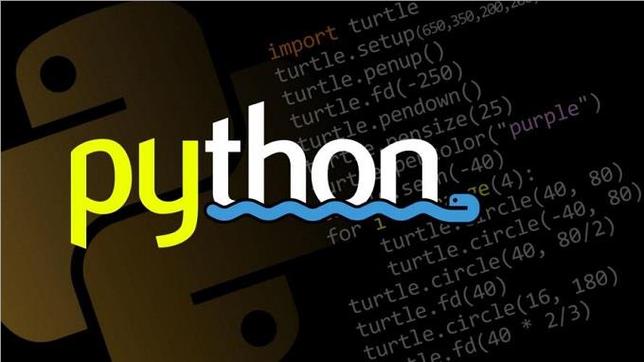【Python】解决Python报错:AttributeError: ‘str‘ object has no attribute ‘xxx‘
成功解决Python报错:AttributeError: ‘str‘ object has no attribute ‘xxx‘。AttributeError: 'str' object has no attribute 'xxx' 错误发生的常见原因包括:1. 属性不存在:尝试访问字符串类型对象中不存在的属性。2. 变量类型混淆:试图访问的变量在程序运行过程中,本应是另一种对象类型,但却意外地变成了 str 类型。3. 类型转换错误:不正确的类型转换导致变量变为字符串类型。4. 不正确的链式方法调用:在链式方法调用中,某个方法返回字符串。
博主简介:现任阿里巴巴嵌入式技术专家,15年工作经验,深耕嵌入式+人工智能领域,精通嵌入式领域开发、技术管理、简历招聘面试。CSDN优质创作者,提供产品测评、学习辅导、简历面试辅导、毕设辅导、项目开发、C/C++/Java/Python/Linux/AI等方面的服务,如有需要请站内私信或者联系任意文章底部的的VX名片(ID:gylzbk)
博主粉丝群介绍:① 群内高中生、本科生、研究生、博士生遍布,可互相学习,交流困惑。② 热榜top10的常客也在群里,也有数不清的万粉大佬,可以交流写作技巧,上榜经验,涨粉秘籍。③ 群内也有职场精英,大厂大佬,可交流技术、面试、找工作的经验。④ 进群免费赠送写作秘籍一份,助你由写作小白晋升为创作大佬。⑤ 进群赠送CSDN评论防封脚本,送真活跃粉丝,助你提升文章热度。有兴趣的加文末联系方式,备注自己的CSDN昵称,拉你进群,互相学习共同进步。
解决Python报错:AttributeError: 'str' object has no attribute 'xxx'
-
- 错误背景
- 发生原因
- 解决方案
-
- 1. 确认属性是否适用于 `str` 类型
- 2. 检查变量类型
- 3. 检查变量的来源
- 4. 使用 `try-except` 块捕获异常
- 5. 检查类型转换
- 6. 使用调试工具检查变量状态
- 示例与应用
- 总结
在Python编程中,AttributeError 表示尝试访问一个对象不存在的属性。当你尝试访问一个字符串 (str) 对象的属性时,它通常会引发 AttributeError: 'str' object has no attribute 'xxx' 错误。在本文中,我们将深入探讨此错误及其解决方案。
错误背景
当你尝试访问一个字符串对象的属性时,例如:
value = "Hello, World!"
print(value.nonexistent_attribute)
运行这段代码时,Python将会抛出如下错误:
AttributeError: 'str' object has no attribute 'nonexistent_attribute'
这条错误信息告诉我们在访问 str 对象的 nonexistent_attribute 属性时发生了 AttributeError,因为字符串对象没有这个属性。
发生原因
AttributeError: 'str' object has no attribute 'xxx' 错误发生的常见原因包括:
- 属性不存在:尝试访问字符串类型对象中不存在的属性。
- 变量类型混淆:试图访问的变量在程序运行过程中,本应是另一种对象类型,但却意外地变成了
str类型。 - 类型转换错误:不正确的类型转换导致变量变为字符串类型。
- 不正确的链式方法调用:在链式方法调用中,某个方法返回字符串。
解决方案
要解决 AttributeError: 'str' object has no attribute 'xxx' 错误,可以通过以下方法确保正确处理字符串对象。
1. 确认属性是否适用于 str 类型
字符串类型对象没有属性。检查代码逻辑,确保属性访问适用于对象类型。例如:
value = "Hello, World!"
# 字符串类型对象本身没有属性,需要确认是否访问了错误对象
print(value) # 直接打印字符串
2. 检查变量类型
确保在访问属性之前变量类型是预期的。可以在访问属性前添加类型检查:
value = "Hello, World!"
if isinstance(value, str):
print("Value is a string and has no attributes.")
else:
# 确保 variable 是所期望的对象
print(value.nonexistent_attribute)
3. 检查变量的来源
跟踪变量的来源,确保它们在程序运行中保持预期类型:
class CustomClass:
def __init__(self, data):
self.data = data
def get_data():
return "This is a string" # 示例返回字符串
data = get_data()
if isinstance(data, str):
print("Data is a string.")
else:
print(data.some_method())
4. 使用 try-except 块捕获异常
使用 try-except 块捕获 AttributeError 并处理异常情况:
value = "Hello, World!"
try:
print(value.some_method())
except AttributeError as e:
print(f"Caught an exception: {e}")
5. 检查类型转换
检查类型转换是否正确,确保变量转换为预期类型而不是字符串:
value = 42
converted_value = str(value) # 确保类型转换正确
# 确保接下来处理的是正确的类型
if isinstance(converted_value, str):
print("Converted value is a string.")
else:
print(converted_value.some_method())
6. 使用调试工具检查变量状态
在调试过程中,使用调试工具检查变量的状态和类型,例如在 IDE 中设置断点或使用 pdb 模块:
import pdb
value = "Hello, World!"
pdb.set_trace() # 设置断点
# 在调试模式下检查变量状态
print(value.nonexistent_attribute)
示例与应用
让我们通过一个更完整的示例展示解决方案:
class CustomClass:
def __init__(self, value):
self.value = value
def compute(self):
if isinstance(self.value, str):
raise ValueError("Value should not be a string")
return self.value * 2
def process_data(data):
# 设置多种返回类型以模拟错误
return "Unexpected string" if data == "error" else CustomClass(data)
# 示例使用
data = process_data("error")
try:
# 尝试调用方法前先检查类型
if isinstance(data, CustomClass):
result = data.compute()
print(f"Result: {result}")
else:
raise AttributeError("Expected instance of 'CustomClass', but got 'str'")
except AttributeError as e:
print(f"Caught an exception: {e}")
except ValueError as e:
print(f"Caught a value error: {e}")
在这个示例中,我们通过检查变量类型,确保在访问属性前判断对象是否为预期类型,并在类型错误时抛出自定义的 AttributeError。
总结
AttributeError: 'str' object has no attribute 'xxx' 错误的常见原因包括属性不存在、变量类型混淆、类型转换错误以及不正确的链式方法调用。通过确认属性是否适用于 str 类型、检查变量类型、检查变量的来源、使用 try-except 块捕获异常、检查类型转换以及使用调试工具检查变量状态,我们可以有效避免并解决此类错误。
希望本文对你理解和解决 AttributeError: 'str' object has no attribute 'xxx' 错误有所帮助。如果你有任何问题或建议,欢迎在评论区留言讨论!
有了这篇技术博客,你可以帮助读者更好地理解并解决 AttributeError: 'str' object has no attribute 'xxx' 错误。如果有其他错误或需要进一步的探讨,请随时联系。
